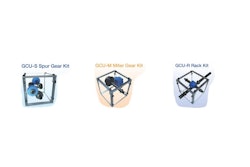
The terms "inventory control" and "inventory optimization" are sometimes used interchangeably, but they are two different concepts.
Confusing them can result in an organization focusing on one over the other. Achieving and maintaining both are critically important for the distributor as they provide different outcomes.
If your inventory is optimized, you have the right SKUs in the correct quantity in the suitable warehouses. With proper inventory control, your bin level accuracy allows for consistent order fulfillment, increasing on-time in-full (OTIF).
Technology can help you achieve both.
“Organizations are increasingly using more sophisticated models to optimize inventory. It's no longer enough to build forecasts based on simple weighted averages and set safety stocks and reorder points once a year,” said Dan Koch, VP of information technology at AD. “Distributors need to utilize advanced analytics models to respond to increased customer expectations and rapidly changing events in the supply chain. The use of advanced analytics for optimizing inventory will become table stakes for distributors within the next five years.”
So what do these two similar yet disparate terms mean, and why are they so important?
Inventory control
Inventory control is the processes and procedures used to maintain inventory on hand in a distribution center or warehouse. The goal of inventory control is to achieve 100% inventory accuracy. These processes touch all parts of the DC or warehouse.
Gaining proper control over your inventory starts during the receiving process. Goods are unloaded and put through a quality control step before being put away. This process can vary greatly, but some quality checks should occur during the receiving process. There are several reasons why distributors should perform quality checks on inbound goods, such as verifying the correct item(s) are present in the quantities ordered and undamaged. Your ERP must have an efficient way to capture quality data for your vendors. Inaccuracies during the receiving process cost the distributor time and money with unnecessary exception processing.
Once goods finish moving through the receiving process, they are put away in locations or bins for future picking. The more manual the process, the more room for errors to occur. It is essential to ensure the correct item, in the right quantity, is placed in the location or bin both physically and systematically. While goods are stored in the warehouse, cycle counting occurs to maintain inventory accuracy and comply with Sarbanes-Oxley rules. Other activities that can impact inventory accuracy are consolidations, replenishments and picking. With real-time cycle counting in your ERP, inventory accuracy increases. Improved inventory accuracy can lead to increased sales. Learn how Reynolds Catering increases efficiency and accuracy in this linked case study.
The procedures must be appropriately documented, taught and preserved to maintain proper inventory control through all these processes. Favorable results are only achieved through consistent application of processes.
Inventory optimization
Inventory optimization is maintaining the correct amount of inventory in the right place.
A distributor’s inventory is its single most significant asset. If your inventory is not optimized, it can cause unfavorable situations that can escalate from stockouts to backorders and poor customer satisfaction. Many buyers are aware of the negative consequences of stockouts, resulting in the tendency to purchase too much inventory, leading to overstocks.
Overstocks tie up valuable capital and can lead to obsolete product write-downs. Additionally, overstocks take up valuable space in your DC, making it less efficient and increasing the risk of being stuck with dead inventory. Space freed up through inventory optimization can be used to improve your product offering.
“It’s important not to treat inventory optimization as a one-time event,” cautioned Leanne Moll, Infor manufacturing leader at Deloitte. “Leverage great technology to create a repeatable process that sustains the efficiency that you have gained. That way, you are driving recurring value.”
As your network increases in complexity, proper inventory optimization is essential. The challenge is having the appropriate inventory and quantities in your network and having them in the correct locations. Failure to optimize inventory results in inconsistent deliveries and increased last-mile delivery costs and times. Correctly positioning inventory in your network solves all of these. The correct ERP helps optimize your inventory by systematically adjusting inventory levels based on your vendors’ and buyers’ habits.
Companies focused on providing a consistent customer service experience optimize inventory and service levels while reducing holding costs. Using the demand planner function in your ERP will optimize your inventory through increased forecast accuracy. Demand planner creates automatic forecasting based on more than 20 statistical app-based methods. Demand planner uses sophisticated demand pattern-sensing statistical algorithms, data outliers, seasonality and exceptional events. It also allows you to visualize and identify the problems you are looking for, increasing your forecast accuracy. With increased forecast accuracy, you will respond faster to supply chain issues, reduce your lost sales due to nonavailability of products and reduce your overall inventory levels.
Maintaining proper inventory control and optimizing inventory levels are essential for any distributor. Consistent processes and procedures, coupled with the correct technology, will make your operation more efficient and profitable.
Will Quinn is the director of industry solution and strategy at Infor.






















